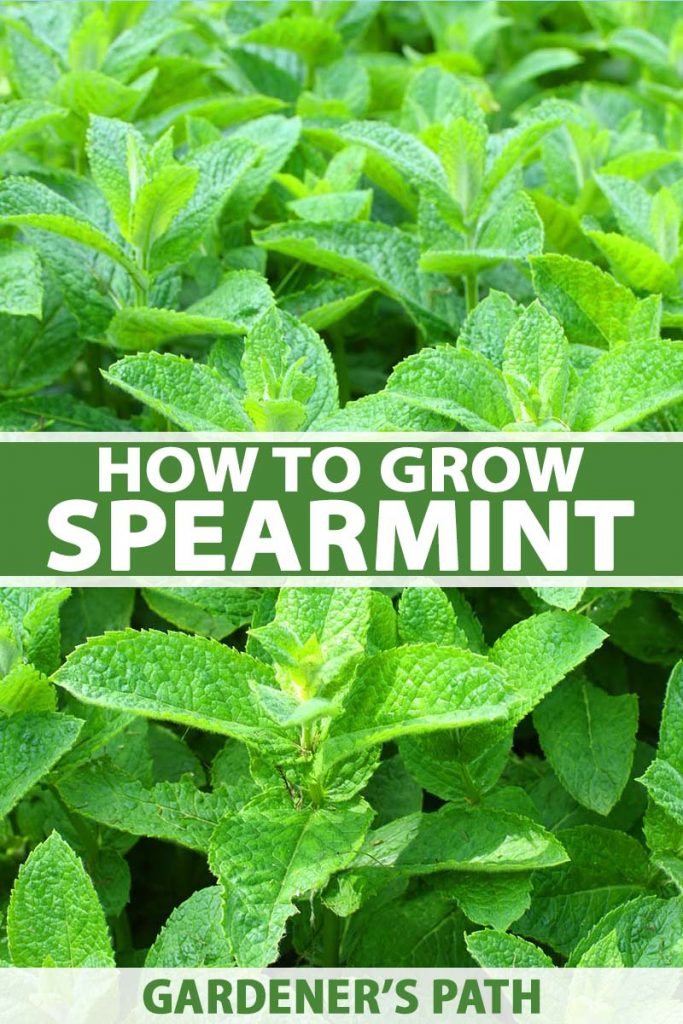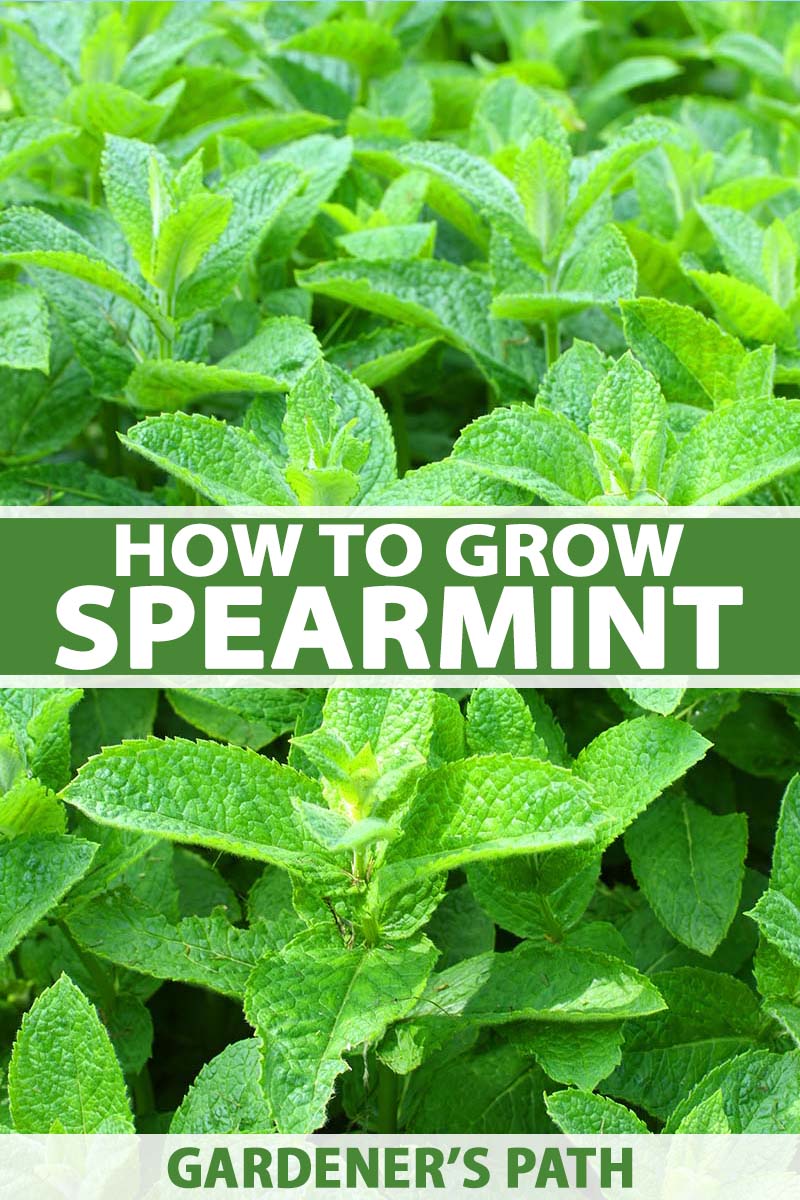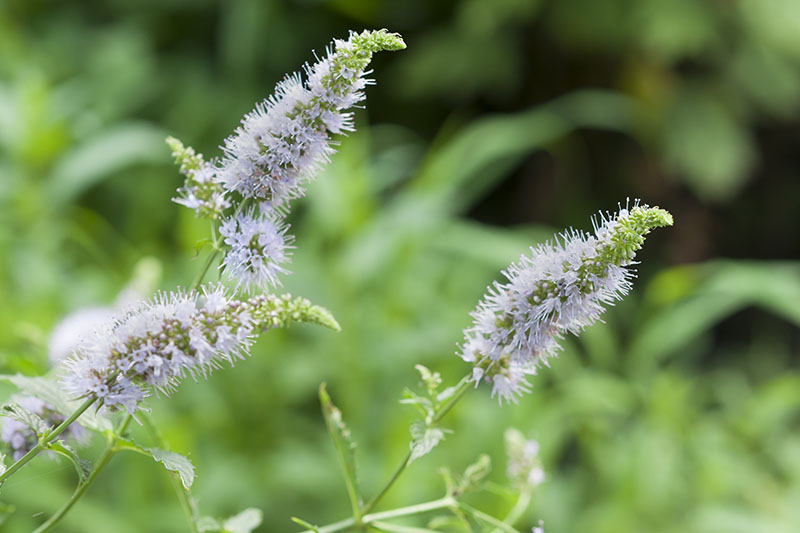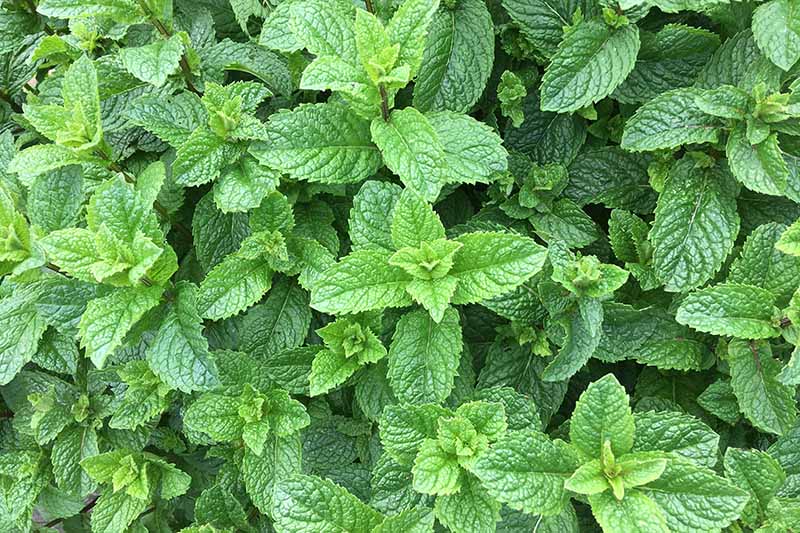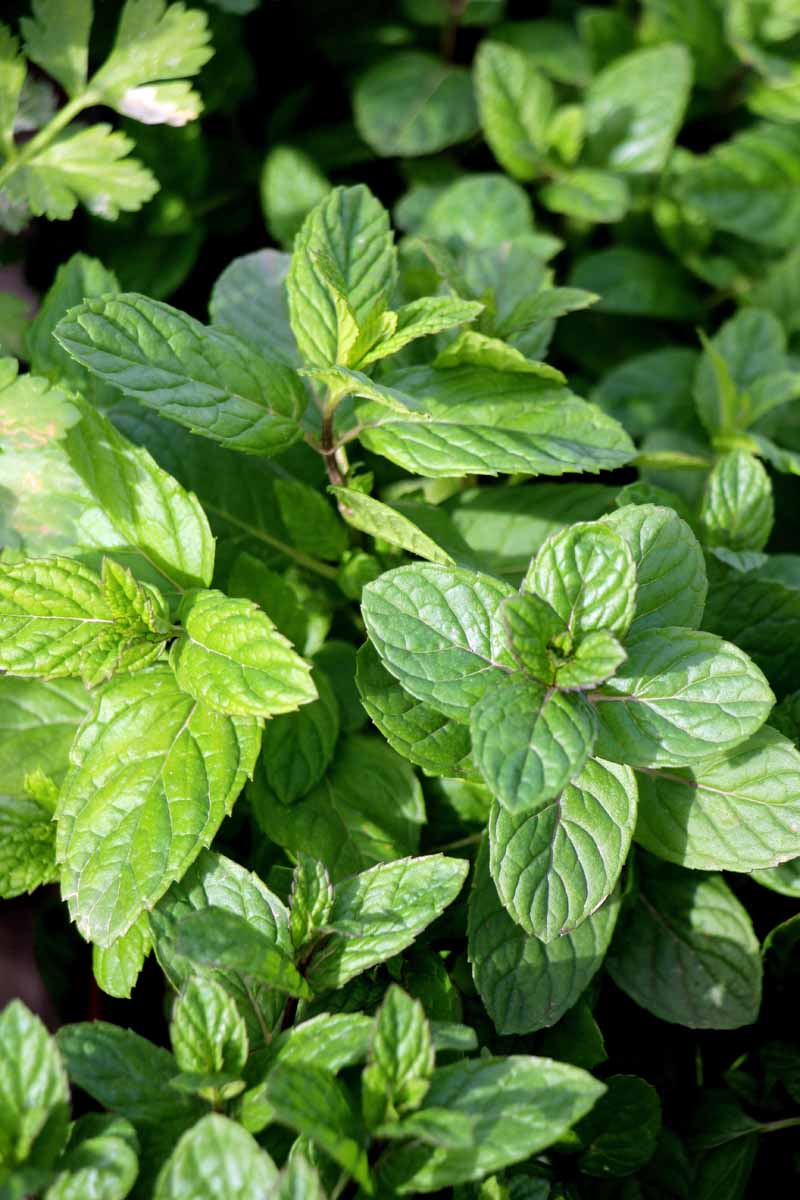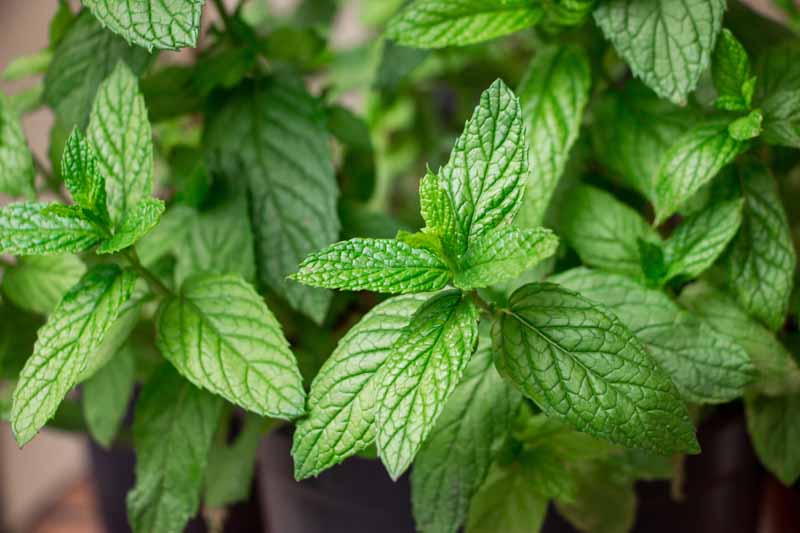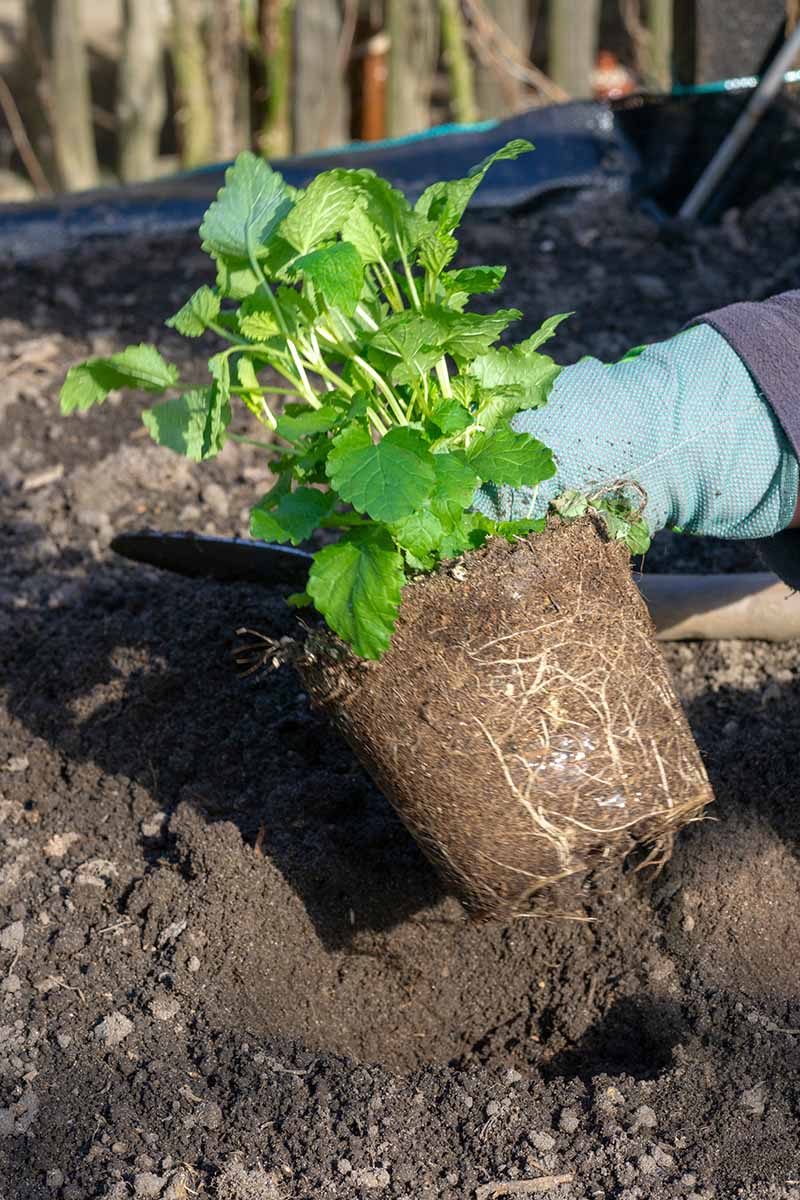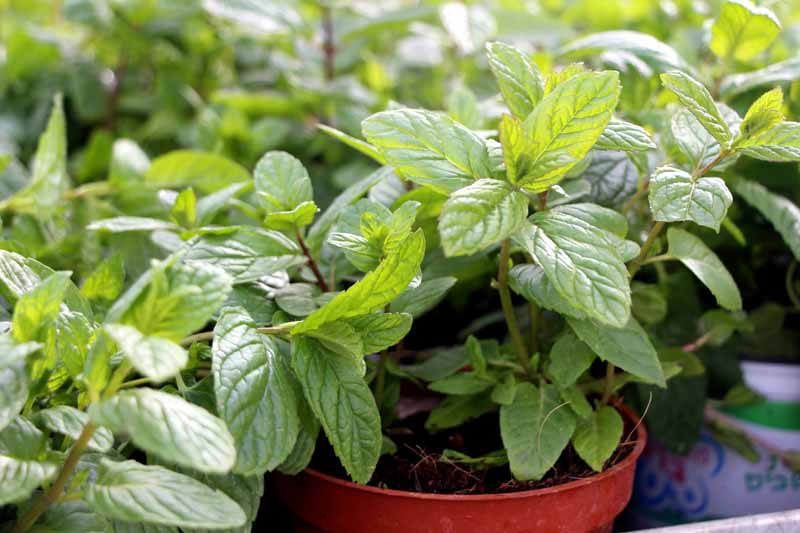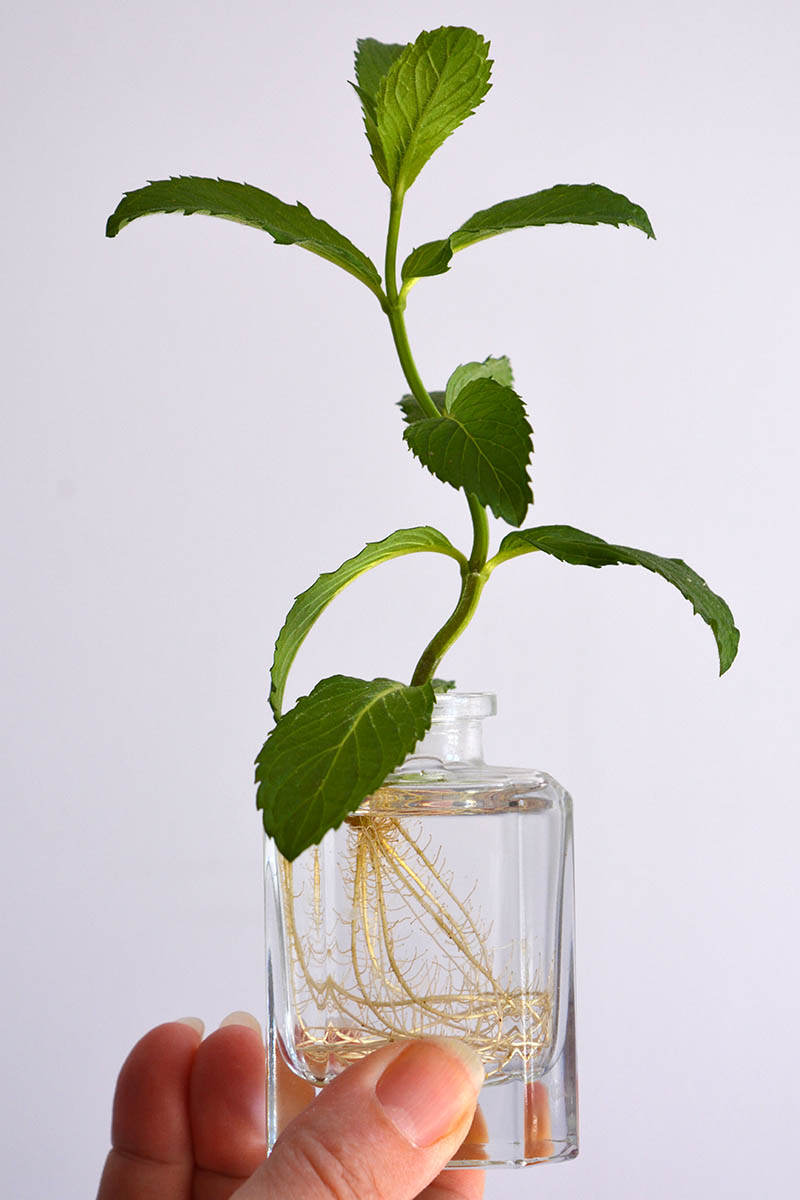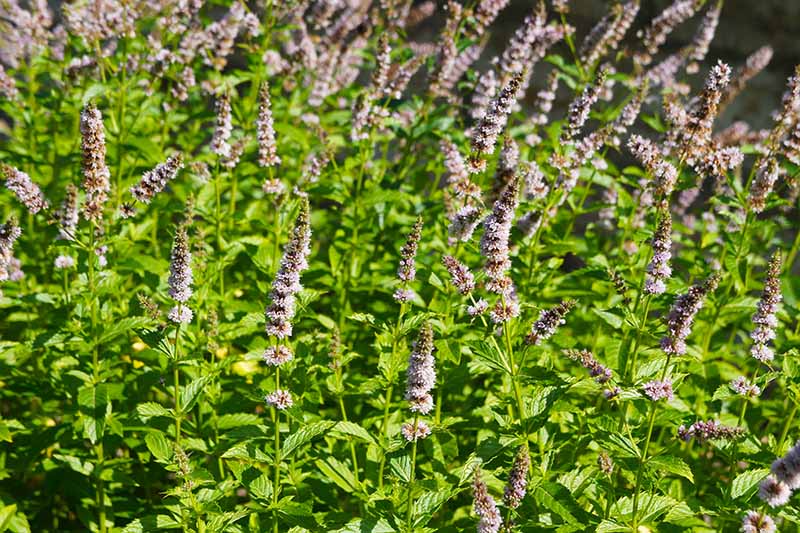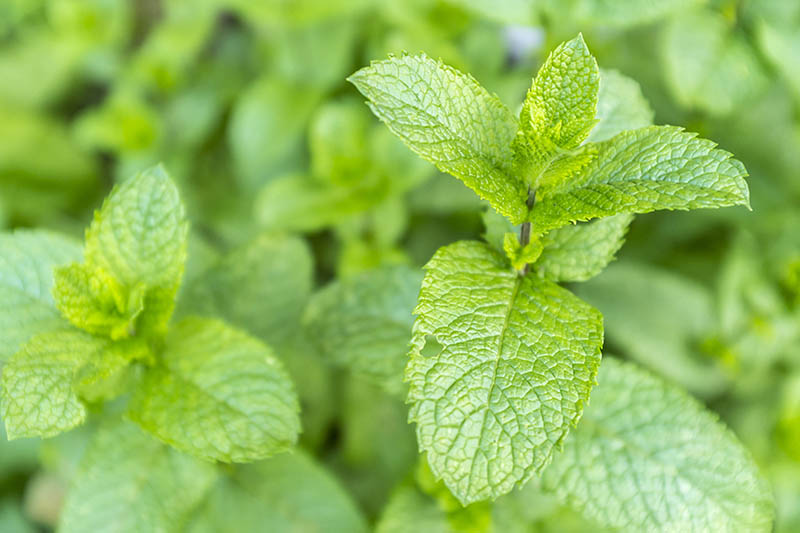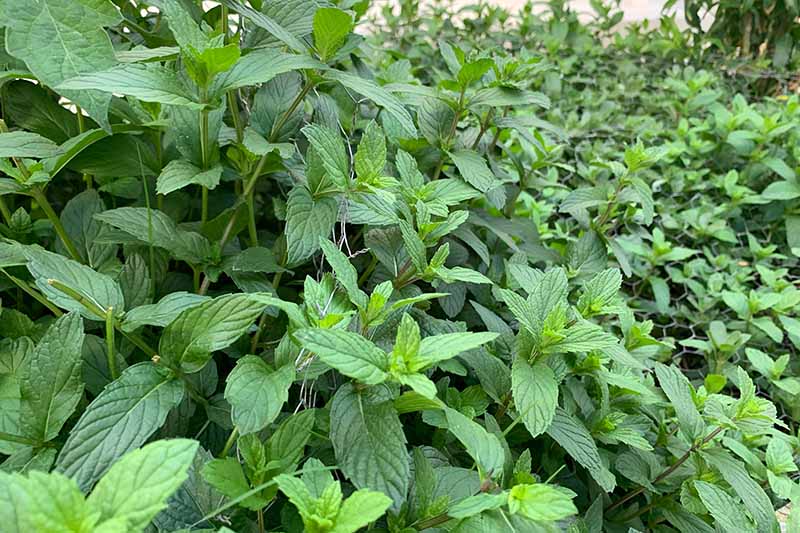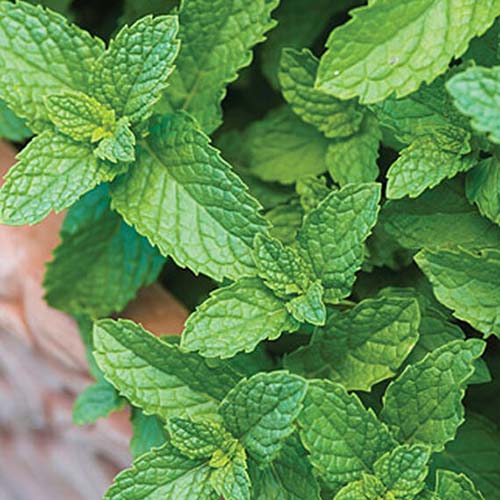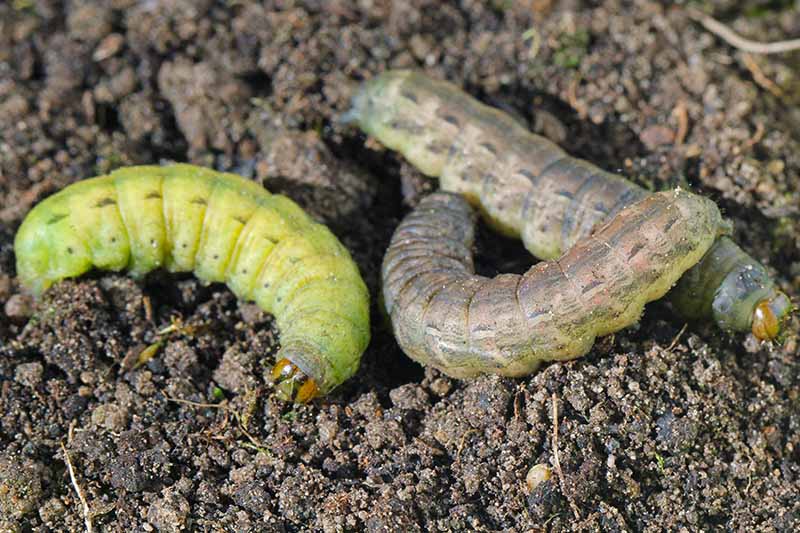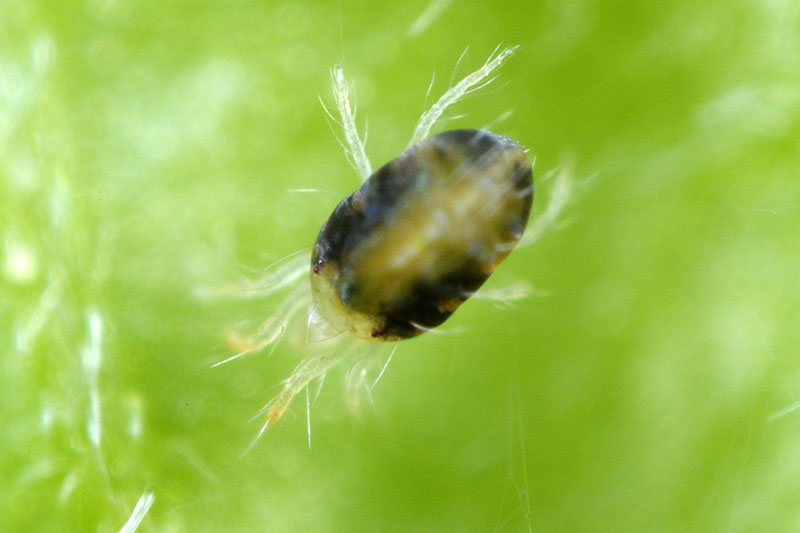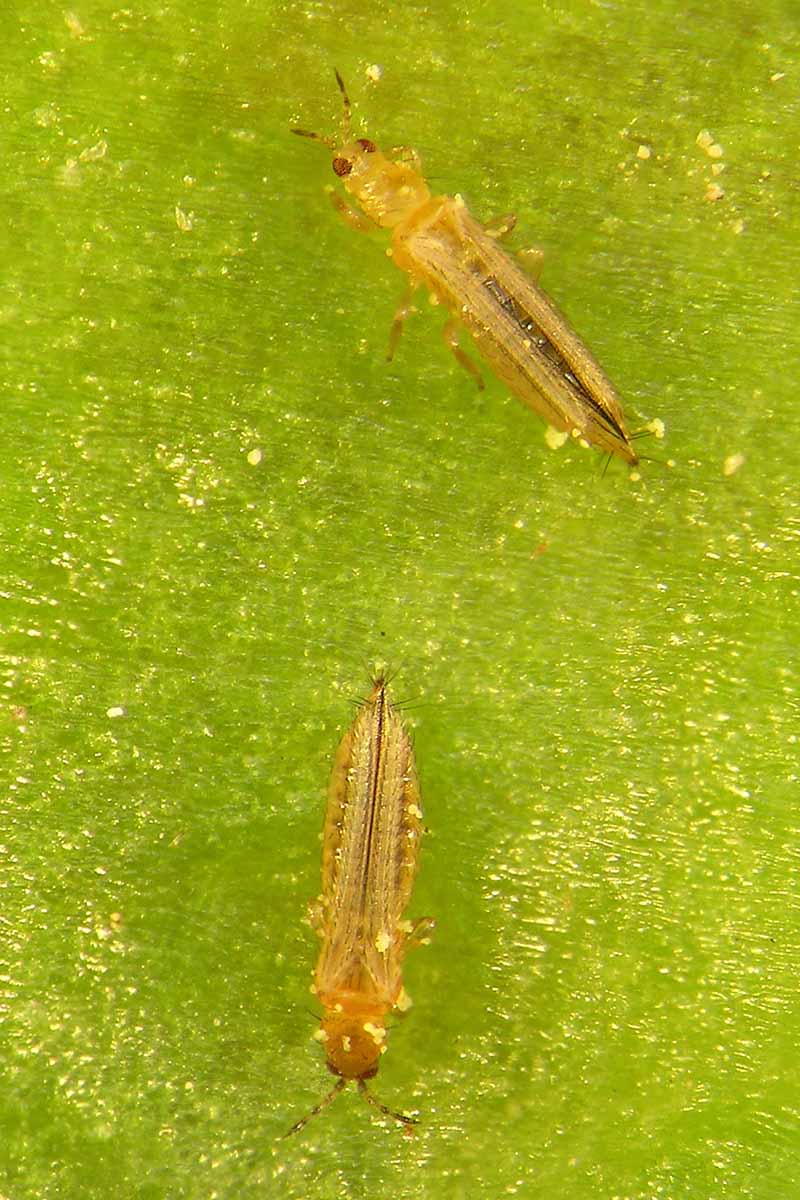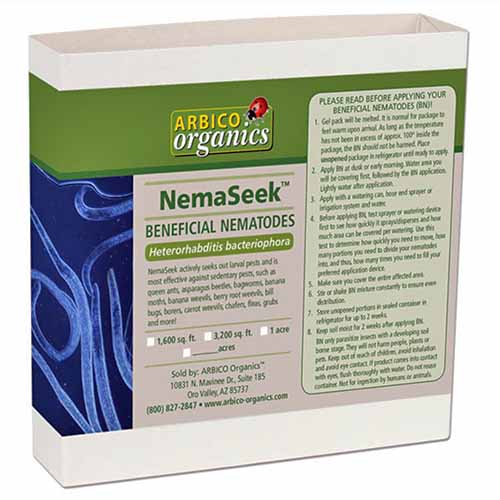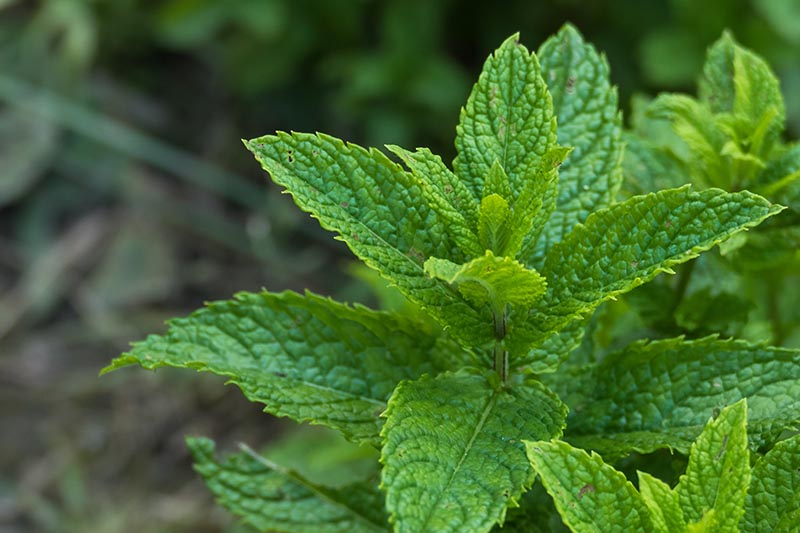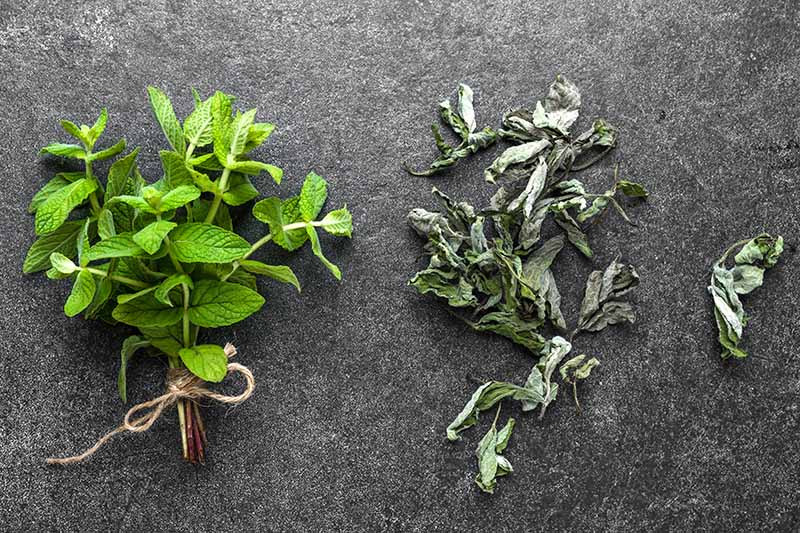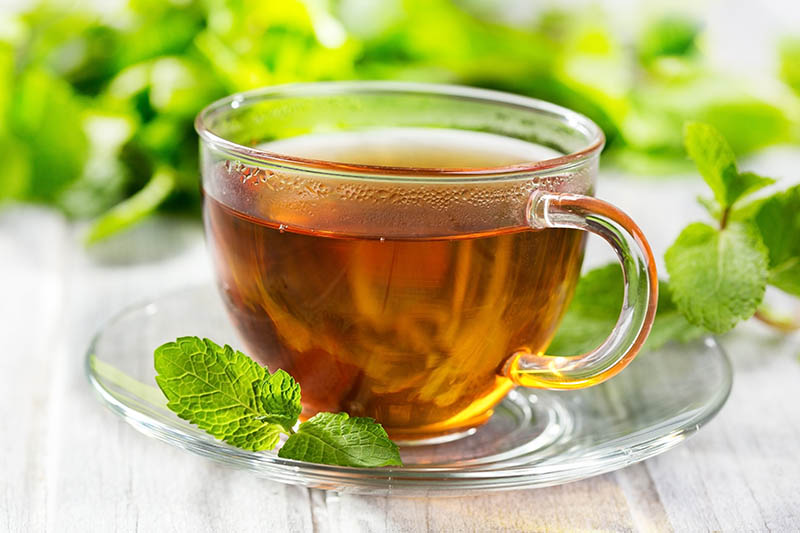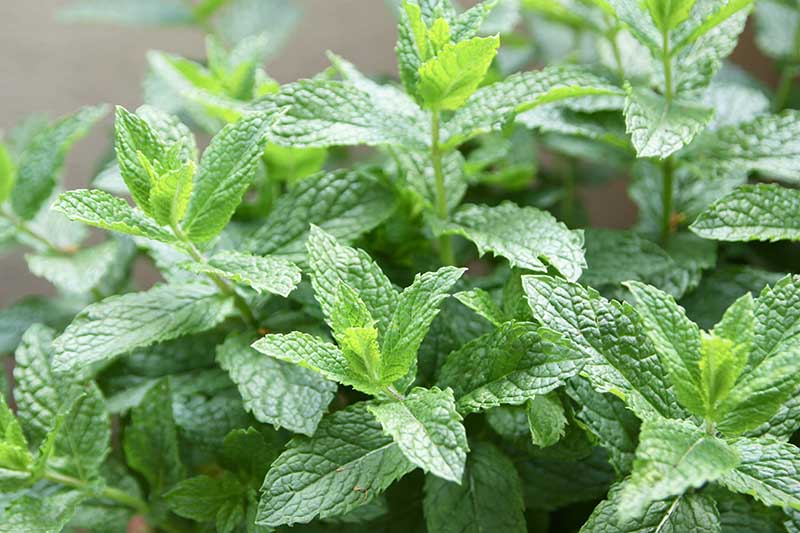While they all contain menthol, which gives them that familiar flavor, they’re not all the same. A lot of times, various types of mint are clumped together in one overarching category. There’s even some debate in the culinary world about whether cultivars like ‘Chocolate Mint’ really deserve to be classified individually. We link to vendors to help you find relevant products. If you buy from one of our links, we may earn a commission. So what sets spearmint apart? And why does it deserve a spot in your herb garden? Spearmint has a distinctive scent, thanks to high quantities of a chemical compound called carvone. This terpenoid gives spearmint its sweet, subtle flavor. If you’ve ever nibbled a peppermint leaf and a spearmint leaf side by side, you can really tell the difference. “Pepper” mint lives up to its name! Spearmint, on the other hand, is more mild. For that reason, this herb is ideal for when you want something that complements your cooking, rather than becoming the flavorful focal point. Spearmint is also unique among mints in that it resists verticillium wilt. Like its mint siblings, spearmint is an aggressive grower that will pop up anywhere and everywhere if you let it – so long as you live in USDA Hardiness Zones 3-11 and have moist soil. It also has pretty pink or lavender flowers that attract pollinators.
At the same time, it can repel rats, mice, and ticks, and can be used to kill mosquito larvae. Talk about a versatile plant! If you want to add spearmint to your garden, there are a few things you need to know. Here’s what I’ll cover:
What Is Spearmint?
Also known as bush, brown, garden, lamb, mackerel, and spire mint, spearmint is a member of the Mentha genus. It’s also sometimes called M. viridis or M. romana. It’s closely related to peppermint, wild mint (M. arvensis), and watermint (M. aquatica).
Spearmint plants can reach about three feet tall at maturity, but it can also be low-growing, depending on the amount of light that it receives. It’s native to Europe, the Middle East, the Himalayas, and China. This tenacious herb has naturalized across northern and western Africa, and North and South America as well. You’ll often see it growing along roadsides or in “waste areas” such as vacant lots or fallow fields. Spearmint is monoecious, meaning it has flowers with both female and male parts, so there’s no need to grow more than one plant for pollination. The pink or lilac flowers grow on spikes and bloom in the summer and fall, typically from June to October.
If you grow it near other mints, spearmint can hybridize. That’s where we got peppermint, actually. Peppermint (M. × piperita) is a hybrid of spearmint and watermint. Spearmint stands apart from other mint varieties because of its smooth, hairless, or nearly hairless leaves that attach to the stem directly, without a stalk in between. Stems are square and the leaves are toothed and oblong or lanced. Spearmint spreads (and spreads and spreads) through rhizomes and stolons. All mint plants have a well-deserved reputation for being incredibly vigorous. What does this mean for your garden? While an individual plant only reaches a mature width of about 24 inches at most, it can put out new growth and spread throughout your garden as much as you choose to let it.
Cultivation and History
Spearmint has naturalized in nearly every state in the US. It has been cultivated for centuries as a flavoring for candies, jams, medicines, teas, and desserts. The common name spearmint references its pointed, spear-like leaves.
It was brought by Roman conquerors to Britain. In the Middle Ages, spearmint was thought to be useful in treating dog bites. In 1568, herbalist John Gerard wrote that “Spere Mynte” “rejoiceth the heart of man.” English colonists brought the pungent herb along with them to North America, and by the time of the American Revolutionary War, spearmint was an important cash crop that was popular as an alternative to black tea.
People have also used it as a strewing herb to repel rodents, ticks, and even demons (no word on how effective it is against the supernatural, though). Today, spearmint is a valuable commercial crop, with Oregon, Idaho, and Washington producing the majority of the essential oil in the US. Some studies show the essential oil has antioxidant and antimicrobial properties. As mentioned above, it also contains high levels of carvone, an antifungal compound that gives this herb its distinct scent. It’s effective in relieving flatulence and in easing nausea and vomiting. Tea made from the leaves can be used to help relieve headaches, stomach issues, gout, and coughs.
Propagation
You can propagate spearmint from seed or stem cuttings, by division, or by layering. Unlike some plants, which can easily be damaged when transplanting, mint roots are sturdy. In the past, I’ve dug up a plant and tossed it in a corner of my yard where I forgot about it. A month later, I had a healthy patch of mint growing.
Prepare the area by testing your soil first. Then, amend it as needed to ensure that you have moisture-retaining soil with a pH between 6.0 and 7.5. Compost, aged manure, or coconut coir dust are good options to aid water retention. Whatever propagation method you choose, mint transplants should be placed in the soil at the same level as they were growing before.
Dig a hole twice as wide as the plant to ensure that the roots can spread. Fill the planting area back in with soil, and water well to settle the roots and give the plant a good drink of water. Keep in mind that it is possible for spearmint to cross pollinate with other types of mint. If you want to save the seeds, leave at least 300 feet between different types.
From Seed
Unlike peppermint, which must be grown via roots or cuttings because it is a hybrid, spearmint grows true to seed. You can start seeds directly in the garden after the risk of frost has passed, or start them indoors about eight weeks before your last frost date. Seeds should be planted about 1/4 inch deep in prepared soil or a seed starting mix. Mint seeds like the soil to be constantly moist and warm – about 70°F. You can cover seeds with a plastic bag or glass cloche to help keep the soil moist if you live in a dry area. After about two weeks, you should see seedlings emerge. If you’ve started your plants indoors, harden them off for about a week before planting them out in the garden. You can do this by giving four-inch seedlings an hour of indirect sun on the first day and then bringing them back inside. Gradually add an hour of sunlight each day until the plant can be outside for seven hours. Then it’s ready to go in the ground. Find more tips on growing mint from seed here.
Stem Cuttings
In the late spring, take a four-inch cutting off the top of a mature plant just below a set of leaf nodes. Remove all of the leaves from the bottom half. You can either prop the cutting up in a glass of water so it’s submerged by about half, or dip the cut end in a powdered rooting hormone and place it in a seed starting medium with two-thirds of the stem sticking out. If you go the glass route, change the water every two days or so.
Either way, in about two weeks, the cutting should form roots. If you aren’t sure, give soil-planted cuttings a tug. If they resist, they’re rooted. You can set out cuttings with established roots into the garden three or four weeks after planting. Harden off rooted cuttings and plant them out in the garden as described above.
Layering
Spearmint takes well to layering since pretty much wherever mint touches the ground, it forms roots eagerly. You can do this at various times of year, as long as you have at least eight weeks of frost-free weather ahead of you. Trim off the leaves of a branch that is at least six inches long, leaving it attached to the parent plant. Lay the branch on the ground and cover it with 1/2 inch of soil. You can weigh the end down with a rock if you need to. After a few weeks, the buried branch should have developed roots, and you’ll see new shoots coming out of the soil. Snip the new plant free from the parent, and dig a hole about six inches deep and wide to carefully remove it from the ground. Now it’s ready to go into its new home.
Root Division
Division is another quick way to increase your spearmint bounty. You can do this at just about any time of year as long as the soil is workable, but spring or autumn is typically best. Dig up a clump of mint with a spade. Depending on the size of the plant, you’ll need to dig nine to 12 inches deep. You don’t need to leave much of a margin around the plant, but try to get up a good chunk. Mint is resilient and you only need a small section of the root with one or two stems attached for it to survive. Use scissors or a gardening knife to cut out a six-inch-wide section of the parent plant. Trim off the top inch or so of the stems to encourage bushy growth. Then, replace the original plant and fill the empty space with soil. Transplant the division that you took into its new spot. Check out this article to learn more about dividing perennials.
How to Grow
Spearmint will give you the best flavor when it is grown in a full sun location. If you live in a hot area where the soil dries out quickly, add an inch of natural mulch like leaves, grass, or compost to retain moisture.
While the weather and local climate are obviously not in your control, leaves will have a better flavor in areas that have a significant fluctuation between nighttime and daytime temperatures. Anywhere with temperatures in the 80s during the day and the 60s at night is ideal. Spearmint can grow in almost any type of soil, including soils that are sandy or loamy, as well as clay. It can also grow in various light conditions from full sun to full shade, though the flavor and blossoms will be less impressive in the shade. It can grow in acidic, neutral, or alkaline soil, but a pH of 6.0-7.5 is ideal. In fact, the most demanding element of growing spearmint is that it needs plenty of water. While it can tolerate low light or less than ideal soil, dry soil can kill it. In the heat of the summer, this can mean watering two or more times a week to ensure the soil is moist to the touch at all times. If the top 1/2 inch of soil is dry, your plant needs water. Regular watering is particularly important in hot, dry climates or if you have sandy soil. You should always water at the base of plants and not on the foliage.
An annual dressing with well-rotted manure will give this plant everything it needs to thrive, unless your soil has a serious deficiency of nitrogen, potassium, or phosphorus. You should also amend the pH if your soil is too alkaline or acidic. Typically, the biggest challenge to growing spearmint is stopping it from spreading. You can grow it in a container to keep it under control, but there are also plenty of other ways to keep it contained in the garden.
This includes pulling up large chunks of the plant as it spreads, pulling any runners, and installing barriers. Any barrier will need to be at least a foot deep in the soil to work effectively. You can cut back plants to the ground in the fall if you choose. Leave about an inch of stems above the soil. This helps to encourage bushier growth and slows the spread of the plant.
For container growing, you’ll need a pot at least 18 inches wide and a foot deep, with drainage holes in the base. Fill your container with a moisture-retaining medium made for container plants. You can add a layer of mulch, such as straw or leaves, to help retain moisture. If you want, you can bury the entire container in the soil to inhibit its spread.
Growing Tips
Keep soil evenly moist but not waterlogged Plant in full sun for best flavor Control spread by pruning, pulling, or planting in containers
Hybrids and Cultivars to Select
There aren’t many cultivars of true spearmint, but you can find plenty of hybrid crosses between spearmint and other Mentha species. In fact, if you grow spearmint near another type of mint, you might end up with a unique hybrid of your own if you save the seeds for planting. Keep in mind that hybrid species and cultivars can’t be propagated by seed since they won’t produce the same characteristics as the parent plants. It’s ideal as a garnish because the stalk can double as a swizzle stick for mojitos or vodka lemonade.
M. spicata Seeds You can find spearmint seeds in a variety of packet sizes available at Eden Brothers.
M. spicata Plants Or, to get a jump on the growing season, you can find a three-pack of plants available at Burpee.
Curly
M. spicata var. crispa or crispata, also known as curly or wrinkle leaf spearmint, has frilly, curly leaves on a substantial stalk.
Kentucky Colonel
Also known as ‘Improved Spearmint,’ M. spicata ‘Kentucky Colonel’ has large, pebbled, round leaves. It’s slightly less sweet than traditional spearmint, and it’s resistant to mint rust and powdery mildew.
Mojito Mint
Mojito mint (M. × villosa) is a hybrid with apple mint. It’s a bit milder than true spearmint with a hint of citrus. It has larger leaves, as well.
Scotch
Scotch spearmint (M. × gracilis) is a hybrid between wild mint and spearmint. This uncommon variety is also called American red or ginger mint. It has an especially sweet aroma.
Wrigley’s
‘Wrigley’s’ spearmint (M. spicata ‘Wrigley’s’) can be a little hard to find. It looks more like apple mint than spearmint, with round, hairy leaves. It has that traditional spearmint flavor, but bolder.
Managing Pests and Disease
Admittedly, mint is easy to grow, but you can occasionally run into trouble. There are a handful of pests that love it as much as humans do. You also have to watch out for a few diseases. That said, I’ve never had a single pest or disease affect my mint in 20 years of growing it, if that tells you anything.
Pests
All mints are bothered by some of the seemingly ever-present pests like aphids, thrips, and spider mites. Here’s what to watch for:
Cutworms
Cutworms (Agrotis spp.) are larvae that nibble on the base of plants at night. You’ll know you have them if you come outside and find stems that have toppled over.
If you see the mottled brown, two-inch caterpillars in your garden, give them a poke. They’ll curl up into a c-shape. The first line of defense is to keep your garden clean. Weeds and debris give this pest a place to hide. You can also sprinkle diatomaceous earth six inches outside of the base of plants. You’ll have to replace it every so often, after watering or particularly after it rains, but it creates an effective barrier by desiccating the worms if they try to cross. Finally, you can create foil or cardboard collars to protect the base of your spearmint plants. Cut the top and bottom off of a cardboard box and tape the ends together to form an open square. Dig two inches deep around your spearmint and sink the cardboard into the soil. Press the dirt around the box to secure it in place. For more information, read our complete guide to controlling cutworms.
Green Peach Aphids
As with most other plants in the garden, mint is susceptible to attack by aphids. Aphids hang out on the undersides of leaves, where they pierce the foliage with their mouth parts and suck out the sap from the plant. Spearmint is attacked most often by the green peach aphid (Myzus persicae) in particular. Look for yellowing or curling leaves. A severe infestation can stunt plant growth or even kill plants. The bigger problem, however, is that these little pests spread disease. Control aphids with a blast of water from the hose. This knocks them loose and sends them packing. You can also dust plants with flour, which constipates aphids. If that fails, use an application of neem oil following the manufacturer’s directions. This should be re-applied once a week for three weeks. Read more about aphids in the garden here.
Two-Spotted Spider Mites
Spider mites attack a range of plants, but the two-spotted spider mite (Tetranychus urticae) loves members of the Mentha genus in particular.
Since these little arachnids are so tiny, you’ll probably notice webbing on your plant before you notice the insects themselves. If you look closely, you may notice what looks like little dots scurrying around on the underside of leaves. Impacted plants will have yellowing leaves that may dry up and fall off the plant. One of the keys to keeping spider mites away is to keep the soil around your plants moist. Mites love dry, warm conditions, so denying them this may encourage them to try another location away from your garden. If you do find that you have them, spray plants with a blast of water to knock the little suckers loose. You can do this for several days in a row and you should be able to get rid of enough that your plants won’t be harmed.
Western Flower Thrips
Thrips (Frankliniella occidentalis) find mint to be a tasty little snack. Not only can they cause plants to be distorted or covered in stippling, but they spread disease, too.
They’re usually light brown or yellow and about 1.5 millimeters long, so they’re difficult to spot with the naked eye. Reflective mulch helps to keep thrips off your plants, and you can avoid planting near anything in the allium family, another favorite food of theirs. If you have a big infestation, you may need to turn to the big guns: insecticides. Keep in mind that these pests may develop resistance to sprays, so you should only use them as a last resort. NemaSeek Beneficial Nematodes You can find beneficial nematodes available at Arbico Organics.
Diseases
Spearmint is lucky in that it exhibits some natural resistance to verticillium wilt, a common problem for mint growers. That doesn’t mean that they have no trouble with diseases, however. Here are a few to watch for:
Mint Rust
Mint rust is caused by a fungus, Puccinia menthae, that loves to attack mint plants. For commercial growers, it can be a serious problem. Look for rusty orange spores or white bumps on the underside of leaves. It thrives in moist conditions and is particularly exacerbated by overhead watering. Keep plants well spaced and thin them out to improve air circulation. Trim away any infected stems and dispose of them. Always water at the base of plants in the morning so the leaves can dry out during the day. In the case of a severe infection, the leaves may die, and rust may eventually kill the plant. Infected plants should be removed and destroyed. If all that fails, a chemical fungicide containing Azoxystrobin can be used according to the manufacturer’s directions. Be aware that this fungicide contains toxic chemicals, so you shouldn’t harvest your mint for at least a few weeks after application.
Powdery Mildew
Powdery mildew is the foe of many garden plants. It thrives in warm, dry weather and is recognizable by its powdery appearance on leaves and stems.
You can mix equal parts milk and water and spray it onto your spearmint to help control this disease. A product made of potassium bicarbonate such as MilStop, available at Arbico Organics, is also effective.
Harvesting
If your goal is to produce spearmint oil, harvest your herbs in the heat of summer. That heat stresses the plants, which causes them to produce more oils. That said, you will want to harvest early in the day after the dew has dried for the most potency. You should harvest just before the plants begin to bloom for the highest concentration of oils. If you want to save the seeds, allow a few stems to blossom. Otherwise, pluck leaves and stems as you need them, using scissors or a pair of clippers. It couldn’t be simpler.
Preserving
Leaves will keep in a plastic bag in the refrigerator for three or four days.
Leaves can be hung in batches and dried, or you can place sprigs or leaves on a screen in a cool, protected area and allow them to dry that way. They can also be dehydrated in an oven on the lowest setting until crisp, or in a food dehydrator. Find detailed instructions on drying herbs here. You can freeze the leaves as well. Wash and roughly chop them, and place them in an ice cube tray to fill each cell about halfway. Fill the rest of each compartment with water, and place in the freezer. You can toss these into drinks or recipes. We have an entire guide dedicated to freezing herbs here. Note that you should avoid consuming spearmint if you have a hiatal hernia or acid reflux.
Recipes and Cooking Ideas
Spearmint works in a variety of dishes ranging from sweet to savory. You can always make the classic mint sauce for lamb, but why not get a bit more creative? Add some pomegranate to make a sauce for chicken. It’s also delicious with peas to make soup, or tossed with butter on pasta. The subtle flavor works perfectly in this peach and corn salad, from our sister site, Foodal. Try chopping the leaves into a lamb burger mixture, grill, and top with a cucumber and mint sour cream sauce. While mint can be overpowering with some vegetables and fruits, spearmint is subtle enough that it’s a nice complement. To change up my morning yogurt, I’ll toss in fresh chopped leaves with some berries and granola. As for drinks, spearmint makes a nice flavoring for mojitos, mint juleps (obviously), and gimlets. Why not try this twist on the classic, a tomatillo mojito – you can find the recipe on Foodal. And let’s not forget dessert! Of course you can candy spearmint leaves and use them to top just about any sweet confection, or they make the perfect addition to anything made with chocolate. Also consider using the leaves in ice cream, and as a flavoring in fruit popsicles.
Medicinal Uses
To make a warm drink to ease stomach issues or a gargle to relieve a sore throat, add a cup of leaves to three cups of boiling water and steep for five minutes. Allow to cool before gargling.
You can also combine a cup of leaves with a quart of alcohol (vodka or another clear spirit works best) to create a tincture.
Quick Reference Growing Guide
Spearmint Is a Standout
When it comes to mint, not all varieties are the same. Spearmint has a unique scent, flavor, look, and disease resistance that should earn it a place in your garden.
Check out our guide for more tips on growing mint in your garden. Once you start cooking up the tasty leaves, you might be glad that it is such a prolific spreader. Please share your tips for using your harvest – I can never find enough ways to eat them. Let me know in the comments below! For more tips to grow your own herbs, check out the following guides next:
How to Start Your Own Herb Garden Tips for Growing Herbs in Containers
Photos by Kendall Vanderslice and Meghan Yager © Ask the Experts, LLC. ALL RIGHTS RESERVED. See our TOS for more details. Uncredited photos: Shutterstock. With additional writing and editing by Allison Sidhu and Clare Groom. The staff at Gardener’s Path are not medical professionals and this article should not be construed as medical advice intended to assess, diagnose, prescribe, or promise cure. Gardener’s Path and Ask the Experts, LLC assume no liability for the use or misuse of the material presented above. Always consult with a medical professional before changing your diet or using plant-based remedies or supplements for health and wellness.
